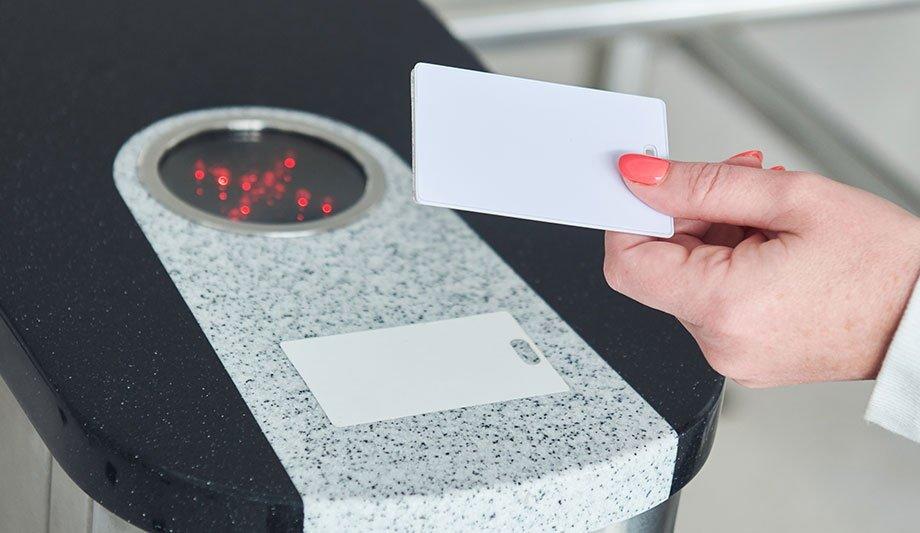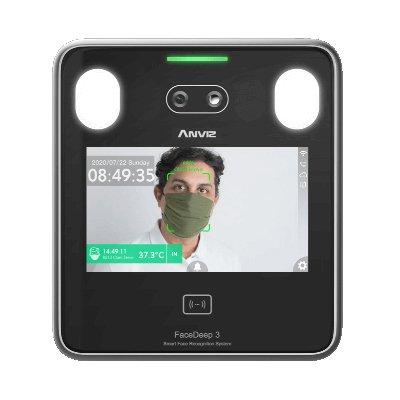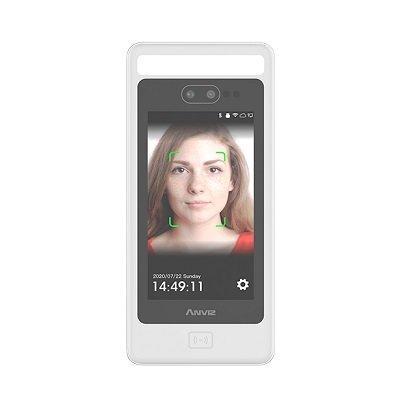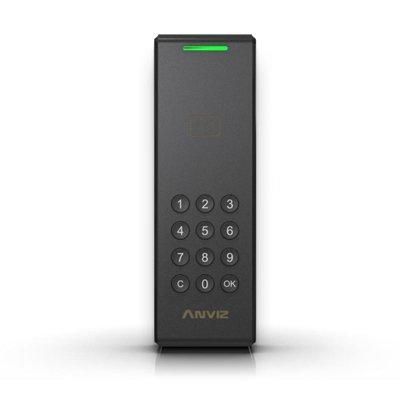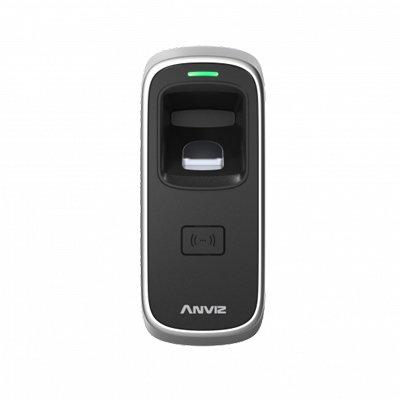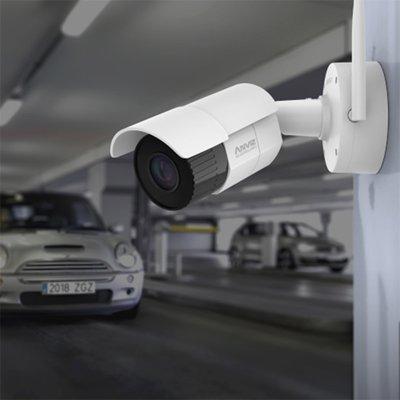
Which security markets are embracing touchless and contactless systems?
Editor Introduction
The idea of touchless systems has gained new levels of prominence during the last year, driven by the global COVID-19 pandemic. Contactless systems have been part of the industry’s toolbox for decades, while technologies like facial and iris recognition are finding new uses every day.
We asked this week’s Expert Panel Roundtable: Which security markets are embracing touchless, contactless systems and why?
Mobile solutions used for access control and building management eliminate the need to physically touch cards, readers, or keypads, or to issue or revoke ID cards in person. Visitor management has also been adapted to a more hands-off experience with cloud-based solutions that limit face-to-face interaction through self-service check-in. Even physical card issuance reduces contact using cloud-based solutions that enable cards to be designed and printed anywhere. Wireless technologies and Bluetooth beacons have been integral to implementing automated physical distancing and contact tracing policies, during the global COVID-19 pandemic. Another application is security patrol monitoring, real-time key tracking, and contractor management. Guards tap each tour checkpoint with their Near Field Communication (NFC)-enabled smartphone for more detailed and efficient, contact-free reporting. Governments are also tapping into the touch-free experience through digital versions of national identity documents. Citizens can use mobile devices to securely request appointments, receive health information and access credentials.
Organisations across industries are recognising the need for smart, safe and healthy building environments. As a result, they are increasingly turning to cloud-based AI-powered, connected solutions that can be united onto a single platform for increased optimisation at every data touch point. Of these solutions, touchless systems have been a standout. The healthcare industry was the initial pioneer in touchless access control, implementing solutions like facial recognition technology to ensure staff and patients can minimise touch contamination, while moving throughout a hospital. Now, this new data-driven approach has been adopted by a variety of industries, including K-12, higher education, transportation, commercial real estate and more have all followed suit to deliver healthy experiences that occupants have come to rely on, while enjoying additional benefits, such as real-time insight into potential security threats and streamlined occupant movements. Because of this, the rapid adoption of touchless technologies will only continue to reach new emerging markets.
Over the last year, we have seen a massive increase in demand for touchless, contactless systems. While you might think this is solely due to the pandemic, the truth is the integration between IT and physical security markets has been going on for quite a while. Many organisations are looking for robust solutions that are touchless and can be utilised remotely. While access control has almost always been a touchless system, it is easy to understand why a solution like this would become widely popular because of COVID-19. The process of using access control to streamline security infrastructures is not a new concept by any means, but due to the rapid development in technology over the past few years, more integrators are searching for access control systems that will serve as a proper solution for organisations, while still supplying the touchless and remote-based features.
Touchless technology is not a new trend, but contactless systems and transactions have surged since the COVID-19 pandemic. Even after the pandemic is over, it is likely public perception of what is hygienic and acceptable in public spaces will have changed. Safetrust is seeing an uptick in touchless access control systems in the education and flexible office space markets. As campuses open up, providing a seamless, safe and hygienic contactless solution to students, such as mobile IDs, cashless payment options and touchless door access to dorms, parking garages and cafeterias, is critical. As more organisations allow their employees to choose where they work, companies are starting to provide flexible workspaces. With less staff at flexible workspace locations, employees can enjoy a contactless access experience by using their mobile IDs to allow secure, touchless access to flexible workspaces, including access to a desk, approved meeting rooms or a corporate gym.
When it comes to vertical markets, touchless and contactless systems are applicable to just about all. In retail, they emphasize features for contactless deliveries. In commercial buildings, biometric and mobile credentials are increasing in popularity, as protective measures to reduce contact have become the goal of many facilities. Additionally, contactless entry can be achieved with licence plate recognition, which can be deployed in parking garages or lots, allowing for easy access control and touchless payment. This underscores the importance of maintaining an open system approach, which gives users the flexibility to add many of these newer technologies into their existing security systems to satisfy changing requirements of their customers.
Touchless and contactless entry control solutions have increased in popularity in the past year, as individuals continue to be more concerned about hygiene safety. Being able to use an intercom without touching the call button is an attractive feature in many markets, including commercial office spaces, educational campuses, and multi-tenant residential buildings. Traditional access control technologies, such as a video intercom, can be equipped with sensors that allow touchless communication at a point of entry. This solution is valuable in office settings, or when someone loses an access control card, or to facilitate contactless deliveries, such as lunch orders or grocery deliveries to a condominium. In today’s world, a touchless or contactless solution can be a vital entry tool in medical centers, hospitals, clinics, pharmacies, and elder-care facilities, as they continue upholding safe practices and seek to mitigate the spread of any illness.
This is always an interesting question, and while the demand for touchless systems rose over this past year, the beautiful thing about access control is that it has pretty much always been a touchless solution. We have seen a massive integration start to take place between the IT and physical security markets, and while yes, the pandemic has caused rapid development of security technology, the integration between the two has been in motion for quite a while, it is just more in focus now. Touchless solutions like access control not only solve any health issues that might have been a concern this past year, but by embracing touchless and open-platform systems, it is much easier to manage and monitor security solutions remotely. We will continue to see strong integration between the two as touchless systems become the norm for most organisations.
As we begin to return to offices, touchless access is an opportunity for all markets to create a new era of work where the security experience is safe, friction-free and seamless, while providing businesses with rich data for business results, including space utilisation and optimisation. Digitally transforming workplace access includes connecting HR workforce identities with touchless access control technology like SafeTrust mobile credentials. Mobile-first access reduces community touchpoints, while e-wallets carry important additional information like vaccination documents. Mobile credentialing (along with facial recognition) improves the lobby experience for employees and visitors with self-service kiosks that automate and streamline check-in/check-out and badging processes according to current COVID-19 policies and procedures.
Needless to say, touchless solutions will be recognised as a Megatrend due to the health value of touchless solutions, even in the post-pandemic world. Specifically, smartphones and facial recognition or other types that are that don't require you to touch anything as you progress through into the building have real promise for solving some friction points in security, such as Access and Visitor management. Thus, the access control market is primarily considered. Speaking of vertical industries, many of the environments like commercial office buildings and educations like schools or universities which are public spaces but have to make sure the authorised persons safe and healthy are supposed to embrace the touchless system actively.
Editor Summary
Currently available systems, many of them contactless by nature, have enjoyed renewed demand during the COVID-19 pandemic. The changing patterns of office utilisation, set in motion during the pandemic, also lend themselves to more application of touchless and contactless systems. Our Expert Panelists clearly expect the demand for touchless systems to continue unabated even in the post-pandemic world.
Anviz Global Inc. products
Anviz Global Inc. news
Anviz, together with its key partner Solotec, participated in the 30th ESS+ International Security Fair, the most international and comprehensive security fair in Latin America, Central & South America, and the Caribbean, with exhibitors from 20 countries and regions around the world, attracting nearly 20,000 professionals from all sectors of the industry. In this exhibition, Anviz focused on the popular and innovative products of smart biometric access control and time & attendance so...
Suddenly, artificial intelligence (AI) is everywhere. The smart technology brings a range of benefits to our lives, from streamlining everyday tasks to making scientific breakthroughs. The advantages of AI and machine learning (ML) also include automating repetitive tasks, analysing vast amounts of data, and minimising human error. But how do these benefits apply to the physical security industry, and is there a downside? We asked this week’s Expert Panel Roundtable: What are the benefits,...
In collaboration with key partner Trinet Technologies Pte Ltd, Anviz organised two successful roadshow events. Both events brought together more than 30 industry experts who showed great enthusiasm for Anviz's business model of user scenario-driven solutions and interest in the new features of the product. Need for Southeast Asian Markets: RCEP Brings New Opportunities, Largest Incremental Market in the World As the largest FTA in the world, which will lead the development of global free trade...
Anviz Global Inc. case studies
When they talk about digitalisation, there is one topic that keeps coming up: Smart Office. Intelligent IoT solutions that makes the users’ everyday lives safer, more comfortable, and more efficient. Systems to centrally manage employees' access with no keys and physical cards - face recognition, manage employee time tracking, and secure office printing with the embedded face recognition reader, are now seen as state-of-the-art. Dürr, founded in 1896, is a mechanical and plant engine...
The Middle East has recently expanded its real estate market as the region's economy grows and urbanisation accelerates. This trend has led to an increasing demand for smart security, and the pace of digital intelligence change is gradually increasing. The security industry in the Middle East is rapidly growing, driven by the government's strong emphasis on national security and terrorism prevention. Centralised systems management Significant attention and investment have been directed towar...
As the UAE's economy progressed, its territory became the world's experimental zone for pioneering construction technologies. The continuous rise of the construction industry has introduced a large number of labourers to stations on construction sites. How to systematically manage workers under regulations, while ensuring the rights and interests of both workers and enterprises is the main problem currently faced by NGC on its way forward. The customer Nael General Contracting (NGC...
Anviz Global Inc. videos
Anviz Global Inc. white papers
Expert commentary
Security beat
Security bytes
- Getting to know Dan Grimm, VP and General Manager of Computer Vision at RealNetworks
- Big wins and the importance of showing up: Insights from SourceSecurity.com editor Larry Anderson
- Setting goals, business travels and radioactivity: Success secrets from Tiandy's John van den Elzen
- Getting to know Jeff Burgess, President/CEO at BCDVideo
Mobile access articles
HID, a worldwide pioneer in trusted identity solutions, announces the expansion of its signature line of Signo™ Readers to include models that meet varying customer needs–from harsh condit...
HID, a worldwide pioneer in trusted identity solutions, announces the expansion of its signature line of Signo™ Readers to include models that meet varying customer needs – from harsh cond...
Munich’s Hofbräuhaus enjoys an iconic status, as both a heritage property and a spiritual home for lovers of German beer. “In this historic building is the world’s most famous t...
Radiofrequency (RF) technology specialists, SPX Communication Technologies launched Evenlode Lite, an entry-level video downlink system designed for regions new to airborne surveillance or those looki...
Wavelynx Technologies, a trailblazer in advanced, secure, and versatile reader and credential solutions, announced the launch of its industry-first app, Configure by Wavelynx, to revolutionise th...
Genetec Inc., a pioneering technology provider of unified security, public safety, operations, and business intelligence solutions, announced the launch of Operations Centre, a cloud-based work m...
Hanwha Vision, the global vision solution provider, has released the XRN-426S-1T recorder - a compact NVR with a built-in 1TB solid-state drive (SSD). The 4-channel recorder supports AI search, when...
Fences, gates, storage cages, racks, containers, tool cabinets, and other non-standard openings often require restricted access and greater control. In many cases, they are secured with mechanical loc...
IDEMIA Public Security North America, the global provider of convenient and trusted biometric-based solutions, including physical and digital secure credentialing in the U.S, is partnering with My Fam...
ABLOY rose to the top of the list as Finland’s most valued brand of 2024, according to an annual survey by pollster Taloustutkimus. Market research company - Taloustutkimus surveys Finnish consu...
Signo Express and Seos Essentials provide a comprehensive, affordable access control solution designed for small to mid-sized businesses. This suite maximises security and flexibility without complex...
Award-winning security manufacturer, Gallagher, has announced the appointment of Merv Williams as Chief Marketing Officer (CMO). Williams will lead the development and delivery of Gallagher Security&r...
Level Home, Inc., the company redefining the smart home, announced the release of professional installer editions of its industry-renowned, award-winning smart locks, Level Bolt and Level Lock+ includ...
The most common wearable device deployed by security professionals is the body-worn camera. Traditionally used by law enforcement professionals, these devices are finding more and more uses in the cor...
Sharry, a global workplace experience platform built around digital employee badges, has successfully delivered its enterprise solution to London’s new international hub opened by PATRIZIA, a gl...

Anviz Global Inc.
32920 Alvarado-Niles Rd Ste 220, Union City, CA 94587
Toll-free: +1-855-ANVIZ4U (855-268-4948)
Email: info@anviz.com
Anviz Singapore
16 Collyer Quay #12-01
Income@Raffles Singapore 049318
Email: info@anviz.com
